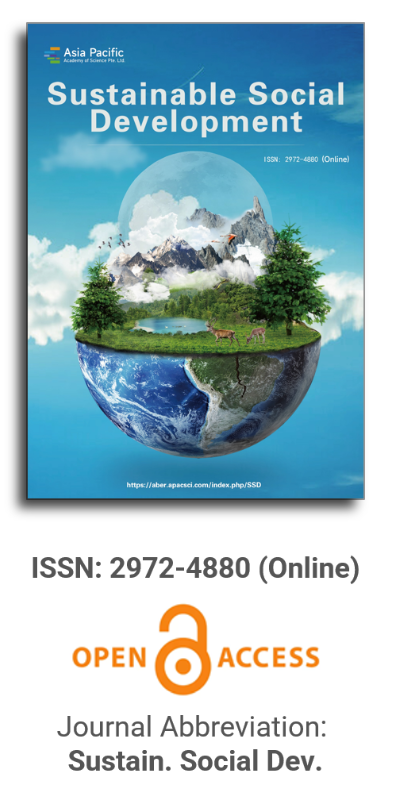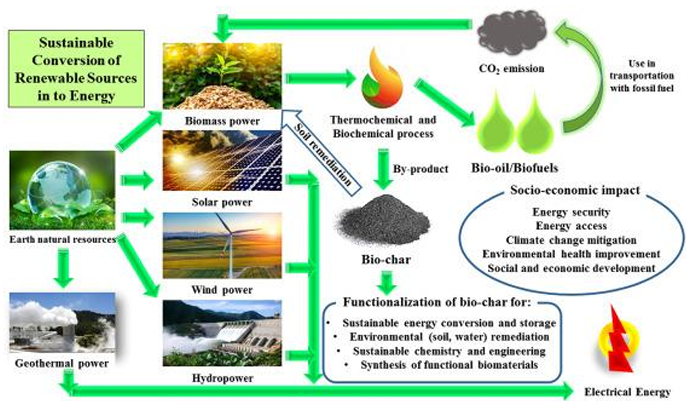
Asia Pacific Academy of Science Pte. Ltd. (APACSCI) specializes in international journal publishing. APACSCI adopts the open access publishing model and provides an important communication bridge for academic groups whose interest fields include engineering, technology, medicine, computer, mathematics, agriculture and forestry, and environment.

A comparative study of the potentials of Oman and UAE in condensate water recovery
Vol 2, Issue 5, 2024
Download PDF
Abstract
Freshwater is essential for everyday activities including drinking, irrigation, farming and many industrial processes. However, freshwater is less than 1% of the total water resources in the planet and, therefore, it is considered a very valuable commodity. Limited resources and growing needs for freshwater triggered global exploration for alternatives to produce enough freshwater for human needs. Today’s most widely used methods to produce freshwater is desalination. However, critical appraisal of the desalination procedures raised the alarm about sustainability of desalination and indicated that significant research is needed to develop alternative green resources of freshwater. Countries in the Gulf area such as Oman and UAE experience hot and humid climates and use air-conditioning units to achieve acceptable comfort levels and create a healthier indoor environment. The cooling process release a large amount of condensate water through cooling coils. This amount of water is usually considered as a problem rather than opportunity and, thus, is wasted into municipal sewerage systems via a system of drainage pipes. This alternative source can be utilized in various drainage, irrigation, and cooling applications to reduce the use of considerable amount of municipal potable water. This source not only takes part in controlling the water scarcity, but also in saving energy and to reducing the carbon footprint. This paper focus on highlighting the opportunities for Oman and UAE to utilize the condensate water from air-conditioning process, as a viable alternative source of green fresh water. It provides a comparison of the potentials of both countries to collect condensate water, based on meteorological data, location and climate. It was concluded that both countries have great potentials and opportunities to utilize this wasted resource.
Keywords
References
- Badr A, Venables J. Towards a Sustainable Water Future. ICE Publishing, London, UK. 2021. doi: 10.1680/oicwe.65253
- Kılıç Z. The importance of water and conscious use of water. International Journal of Hydrology. 2020; 4(5): 239–241. doi: 10.15406/ijh.2020.04.00250
- El-Dessouky HT, Ettouney HM. Fundamentals of saltwater desalination. Elsevier Publishing. 2002.
- Kalogirou S. Seawater desalination using renewable energy sources. Progress in Energy and Combustion Science. 2005; 31(3): 242–281. doi: 10.1016/j.pecs.2005.03.001
- World Health Organization (WHO). The World Health Report. World Health Organization (WHO). 2024.
- Ritchie H, Roser M. Urbanization; Our World in Data. Available online: https://ourworldindata.org/how-urban-is-the-world (accessed on 2 June 2024).
- Tzanakakis VA, Paranychianakis NV, Angelakis AN. Water Supply and Water Scarcity. Water. 2020; 12(9): 2347. doi: 10.3390/w12092347
- Khan SA, Badr A. Energy recovery through air-conditioning machine's condensate. International Journal of Engineering Research & Technology (IJERT). 2014; 3(6).
- Sherif M, Liaqat MU, Baig F, et al. Water resources availability, sustainability and challenges in the GCC countries: An overview. Heliyon. 2023; 9(10): e20543. doi: 10.1016/j.heliyon.2023.e20543
- Khan SA, Badr A. Recycling A/C chilled water condensate to reduce water scarcity in Oman. In:Towards a Sustainable Water Future: OICWE2020 Proceedings, London, UK, 2021; 171–187.
- Moosa IS, Kazem HA, Al-Badi H, et al. Evaluation and analysis of freshwater from atmospheric moisture as byproduct of air-cooling units in Oman. Renewable Energy and Environmental Sustainability. 2021; 6: 19. doi: 10.1051/rees/2021016
- Pless S, Torcellini P. Net-Zero Energy Buildings: A Classification System Based on Renewable Energy Supply Options. Office of Scientific and Technical Information (OSTI). 2010. doi: 10.2172/983417
- Garde F, Lenoir A, Scognamiglio A, et al. Design of Net Zero Energy Buildings: Feedback from International Projects. Energy Procedia. 2014; 61: 995–998. doi: 10.1016/j.egypro.2014.11.1011
- Badr A. Desalination sustainability-The need to think again. In: Towards a Sustainable Water Future: OICWE2020 Proceedings. 2021; 171–187.
- Webber M, Aliyu A, Jin SH, et al. A techno-economic review of direct air capture of moisture processes: sustainable versus energy-intensive methods. International Journal of Environmental Science and Technology. 2024. doi: 10.1007/s13762-024-05720-7
- Algarni S, Saleel CA, Mujeebu MA. Air-conditioning condensate recovery and applications—Current developments and challenges ahead. Sustainable Cities and Society. 2018; 37: 263–274. doi: 10.1016/j.scs.2017.11.032
- NanNan L, Li J. Prospects of Air Conditioning Condensate Recovery and Utilization Technology. IOP Conference Series: Earth and Environmental Science. 2021; 781(4): 042052. doi: 10.1088/1755-1315/781/4/042052
- Okeyinka OM, Ogundipe OO, Oloke DA, Adesogan SO. Reclaimed Air-conditioner Condensate as Alternative Source of Water in Hot Humid Region. IOSR Journal of Mechanical and Civil Engineering (IOSR-JMCE). 2021; 18(6):25–30. doi: 10.9790/1684-1806012530.
- Wikipedia Geography of the United Arab Emirates Available online: https://en.wikipedia.org/wiki/Geography_of_the_United_Arab_Emirates. (accessed on 2 June 2024).
- Kottek M, Grieser J, Beck C, et al. World Map of the Köppen-Geiger climate classification updated. Meteorol. Z. 2006; 15: 259-263. doi: 10.1127/0941-2948/2006/0130.
- Water Resources in Oman. Water of the Middle East and North Africa. Country Report. Water. 2018. https://water.fanack.com/oman/water-resources-oman/
- Chaichan MT, Kazem HA. Water solar distiller productivity enhancement using concentrating solar water heater and phase change material (PCM). Case Studies in Thermal Engineering. 2015; 5: 151–159. doi: 10.1016/j.csite.2015.03.009
- Mousa H, Naser J, Gujarathi AM, et al. Experimental study and analysis of solar still desalination using phase change materials. Journal of Energy Storage. 2019; 26: 100959. doi: 10.1016/j.est.2019.100959
- Lawrence T, Perry J, Dempsey P. Capturing condensate by retrofitting AHUs. ASHRAE Journal. 2010; 52(1): 48–54.
- Jurga A, Pacak A, Pandelidis D, et al. Condensate as a water source in terrestrial and extra-terrestrial conditions. Water Resources and Industry. 2023; 29: 100196. doi: 10.1016/j.wri.2022.100196
- Painter FI. Condensate harvesting from large dedicated outside air-handling units with heat recovery. Building Engineering. 2009; (115).
- Deng X, Shen Y, Yang S, et al. Feasibility of condensate water recycle of split air handling unit in Chinese University buildings. Energy and Built Environment. 2024; 5(2): 309–315. doi: 10.1016/j.enbenv.2022.10.006
- Uddin S, Omar A, Alam MA. Assessment of quantity and quality of condensate water from air-conditioners. In:Proc. 2nd International Conference on Water and Environmental Engineering (iCWEE2019) 19–22 Jan 2019, Dhaka, Bangladesh.
- ASHARE. American Society of Heating, Refrigerating and Air-Conditioning Engineers, Inc. Available online: https://www.ashrae.org/ (accessed on 2 June 2024).
- Abdellatif M, Al-Shamma’a A. Review of sustainability in buildings. Sustainable Cities and Society. 2015; 14: 171–177. doi: 10.1016/j.scs.2014.09.002
Supporting Agencies
Copyright (c) 2024 Atef Badr
License URL: https://creativecommons.org/licenses/by/4.0/

This site is licensed under a Creative Commons Attribution 4.0 International License (CC BY 4.0).

Prof. Kittisak Jermsittiparsert
University of City Island, Cyprus






It is with deep regret that we announce the cancellation of the Forum on Sustainable Social Development & Computing and Artificial Intelligence, originally scheduled for June 15, 2025.

